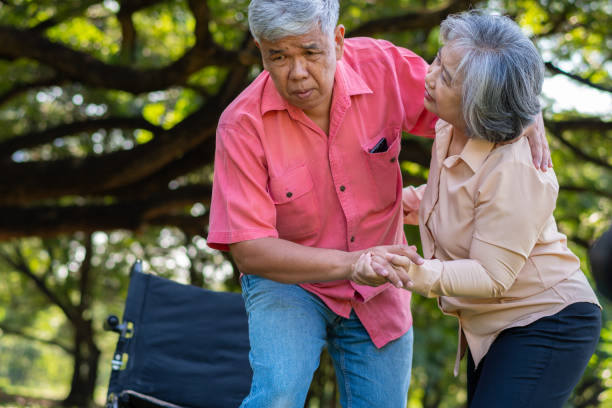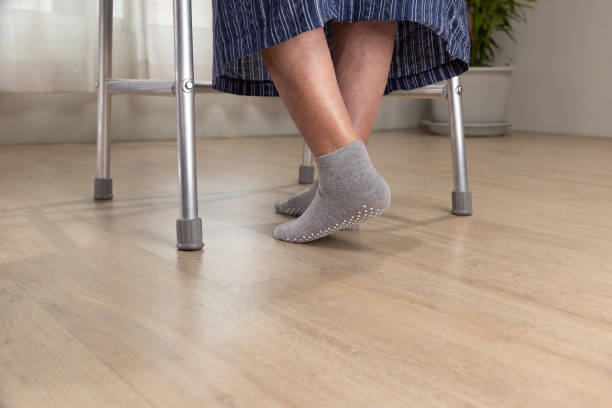The concern for personal safety and mobility becomes increasingly important as we age. One of the significant aspects of this is fall prevention, especially among seniors who are particularly vulnerable to the adverse effects of falls.
This guide offers a comprehensive look at fall prevention strategies for seniors, aiming to enhance their independence and quality of life while mitigating fall risks. From simple changes in the living environment to specific exercises that improve strength and balance, we will explore various tactics to safeguard the well-being of our elderly loved ones.
Contents
Fall Risk Factors and Their Impact on Seniors’ Health
Recognition and understanding of the potential risk factors are the first steps in fall prevention for seniors. Various elements can increase the likelihood of falls among older adults, including underlying health conditions such as vision impairment, arthritis, or cognitive disorders. Additionally, certain medications may affect balance and coordination, posing a heightened fall risk.
Below are some fall risk factors to take note of:
Medication and Fall Risk
Some medications can indirectly increase the risk of falls by causing side effects such as dizziness, dehydration, or confusion. Seniors and their caregivers should be mindful of these risks when taking or administering medications. Regular consultation with healthcare providers is essential to ensure medications are being used safely and effectively, with the benefits outweighing potential risks.
Vision and Fall Risk
Poor vision can greatly increase the risk of falls. Regular eye check-ups can help detect vision problems early and mitigate their impact on mobility. Simple solutions like adequate lighting and the use of glasses or contact lenses can also be instrumental in preventing falls.
Physical Fitness and Fall Risk
Physical strength and balance play a crucial role in fall prevention. Regular physical activity helps maintain muscle mass and improve coordination, significantly reducing the risk of falls. Specifically, exercises focused on strength, balance, flexibility, and endurance should be incorporated into seniors’ fitness routines.
Home Environment and Fall Risk
The home environment can pose many hazards for falls, especially for seniors. Cluttered walkways, slippery floors, loose rugs, and inadequate lighting are among the common household risks. Making simple modifications like securing rugs, installing handrails, and improving lighting can help create a safer home environment for seniors.
Proper Footwear and Fall Risk
Wearing improper footwear can increase the risk of falls. Seniors should opt for non-slip, well-fitted shoes that provide good support. High-heeled shoes, flops, or shoes with smooth soles should be avoided.
Nutrition and Fall Risk
Proper nutrition is essential for maintaining overall health, strength, and bone density, all of which impact fall risk. Seniors should maintain a balanced diet rich in calcium and vitamin D to support bone health. Dehydration, which can affect balance, can be prevented by drinking plenty of fluids throughout the day.
Implementing Fall Prevention Measures in Daily Life

Once we understand the various fall risk factors, we must implement strategies to minimize these risks. Embracing these measures as part of daily life can go a long way in ensuring the safety and well-being of seniors. Let’s delve into some more practical steps to reduce fall risks effectively.
Regular Health Check-ups
Regular health check-ups are crucial in identifying and managing potential health issues that could increase the risk of falls. Regular screenings and consultations with healthcare providers can help manage conditions like blood pressure, osteoporosis, and diabetes, which can affect balance and coordination.
Exercise and Physical Activity
As mentioned earlier, physical fitness is a significant factor in fall prevention. Seniors should engage in regular physical activities such as walking, yoga, or tai chi that improve strength, balance, and coordination. Working with physiotherapists or trainers experienced in senior fitness who can provide personalized exercise programs.
Home Safety
Maintaining a safe home environment is critical. This involves removing tripping hazards, providing adequate lighting, installing safety devices like handrails, and using non-slip mats in bathrooms and kitchens. It’s also important to keep essential items like telephones, medications, and glasses within easy reach to prevent unnecessary movement.
Proper Footwear
Seniors should wear proper footwear at all times. Shoes should be sturdy, non-slip, and fit well. Avoid wearing socks without shoes, and consider using slippers with a back for extra support and safety.
Nutritional Support
A balanced diet rich in essential nutrients like calcium and vitamin D is crucial in maintaining bone health and muscle strength. Seniors should also stay hydrated, as dehydration can lead to dizziness and instability, increasing the risk of falls.
Conclusion
Fall prevention in seniors requires a comprehensive approach that encompasses regular health check-ups, an active lifestyle, a safe home environment, proper footwear, and good nutrition. By understanding and addressing the various risk factors, we can significantly reduce the potential for falls, thereby enhancing the quality of life for our elderly loved ones. Everyone’s responsibility — from healthcare providers to family members — is to ensure our seniors’ safety, promoting their independence and well-being in the autumn of their lives.

